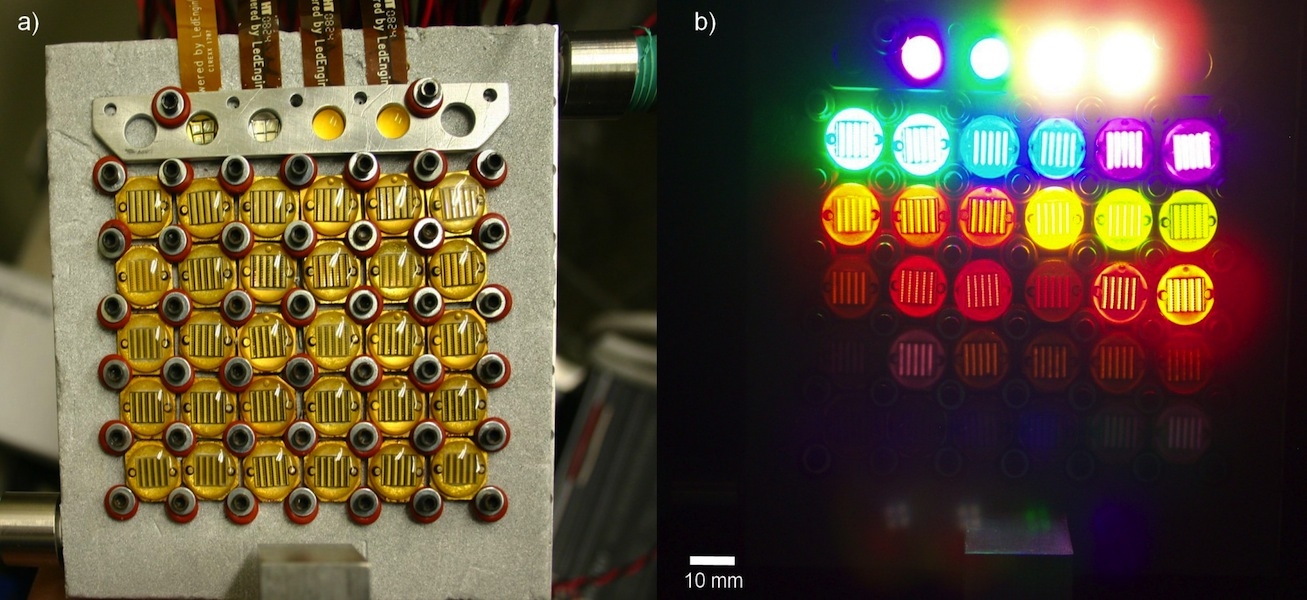
News
NIST measurement advance could accelerate innovation in solar devices
July 26, 2012 | By Anthony Capkun

July 26, 2012 – A new measurement system devised by researchers at the National Institute of Standards and Technology (NIST) is said to accurately and quickly measure the electric power output of solar energy devices—a capability useful to researchers and manufacturers working to develop next-generation solar energy cells.
Innovative devices that convert sunlight to electric power more efficiently and cost effectively than the current generation of solar cell technology are the objects of a global pursuit, says NIST, especially in the race to secure “pole position in the competition for fast-growing international markets for clean energy sources”.
The NIST team combined 32 LEDs—each generating light from different segments of the solar spectrum—and other off-the-shelf equipment with their custom-made technologies to build a system that measures the wavelength-dependent quantum efficiency of solar devices over a relatively large area.
Anticipated advantages over current approaches are greater speed and ease of operation, more uniform illumination, and a service life that is about 10 times longer.
The system for measuring spectral response easily accommodates two unique but complementary methods for determining how much electric current a solar, or photovoltaic (PV), device generates when hit by a standard amount of sunlight. Both methods are straightforward, and they use the same hardware setup. With either method, the automated system produces measurements more rapidly than current instruments used to simulate solar radiation and characterize how efficiently a device converts light energy to electric energy, says NIST.
One method, which activates the LED lights sequentially, is less subject to interference than the other technique, and yields a spectral response measurement in about six minutes. With the other method, all 32 LEDs are activated simultaneously, but each generates pulses of light at a different rate. The solar response of a PV device over the entire LED-blended spectrum can be determined in about four seconds.
Though more susceptible to interference, the faster method has potential for in-line manufacturing tests for ensuring quality, the researchers write.
Print this page